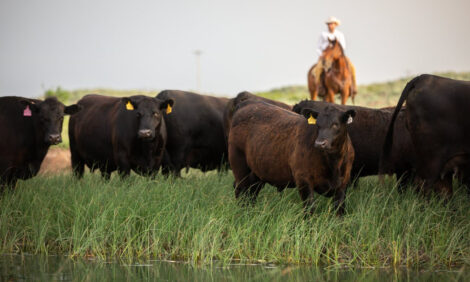



High Demand for Beef, Poultry Meat and Eggs in Africa Creates Opportunities
AFRICA - Demand for beef and other meat products remains strong in Africa, despite most producers in regions such as southern Africa and the Common Market for East and Southern Africa (COMESA) looking to grow exports into the European Union and other international markets, writes Tawanda Korombo.Africa is however battling a severe drought occasioned by the El Niño dry weather phenomenon. This has affected livestock production in most African countries such as South Africa, Zimbabwe, Zambia, Malawi and others, leading to shortages of meat, dairy and other livestock products, officials and executives with cattle, poultry and dairy companies in the region said.
This was also giving advantages to producers that are weathering the drought as markets have now arisen across the continent. Production capacity for dairy, beef and poultry has nose-dived in countries such as Botswana and Zimbabwe after de-stocking, with the situation also worsened by outbreaks of diseases.
“Demand for beef remains strong both in Zambia and the region and supply of beef also remains solid. As a result, beef volumes are expected to continue to grow,” said Carl Irwin joint chief executive officer of Zambeef, the London and Zambia listed beef producer and processor said on Tuesday.
A meat consumption study released by Gira this week shows that of all the 43 African markets it surveyed in Africa, only Chad and Niger did not register an increase in meat consumption. The region has had average meat consumption demand rising by 4 per cent per year between 2004 and 2014, with meat volumes consumed in the region rising to 22 million tonnes in 2015.
Zambeef posted a 72 per cent jump in operating profits to $13.7 million for the half year period to the end of March 2016. It has now set its eyes on growing its footprint in the chicken and egg production area to diversify revenue streams.
The Poultry Producers Association in Zimbabwe said this week that local producers were constrained by rising input costs for feed-stocks, water shortages and other problems. This was resulting in them failing to meet demand for poultry and egg products in Zimbabwe.
“The industry is not operating at maximum capacity especially at this time of the year as most informal farmers stop raring chickens because of the harsh winter conditions.
"Those that are adequately capacitated to continue producing throughout the cold seasons are battling other constraints such as high costs and water shortages and this is leaving a supply gap in the market,” said an official with the poultry producers grouping.
But for Zambeef and other beef producers, the devil lies in the detail of distribution chains and while new processing plants and projects are being planned, they also have to prepare adequately for the booming demand for meat products in the region.
The cold chain supply line is being revamped with in-store butcheries and other stand-alone butcheries that are more modern and attractive to the shopper.
As a result of the strong beef and other meat products demand, Zambeef is tying up with African retailers for in-store butcheries across Africa as it seeks better distribution options. Inside Zambia, “demand for eggs remains very strong and Zambeef has been unable to meet demand,” which has been viewed as an opportunity for the company and other producers to raise capacity.
“During the next six months we will increase our layer numbers from 165,000 to 285,000, which will result in strong growth in the egg operations,” Zambeef said.
Gira’s Sub-Saharan Africa Meat Market Opportunities further notes that “the challenges for the industry in the mid-term will slow the potential growth” of the industry as livestock production in the region “remains mainly in the backyard and informal” sectors. South Africa however has a commercial base for its livestock production, according to the study.
“The current producers can expand, but are limited by their agricultural knowhow, access to funding and desire for more market focused production. This means that to meet the increase in demand for meat the industry must transition to a more commercial base,” says the report.

Tawanda Karombo
Freelance Writer, ThePoultrysite.com


